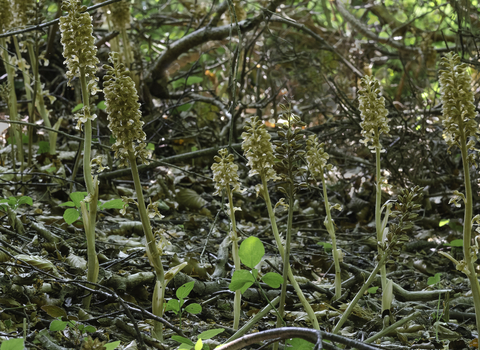
Bird's-nest orchids ©Les Binns
Bird's-nest orchid
The Bird's-nest orchid gets its name from its nest-like tangle of roots. Unlike other green plants, it doesn’t get its energy from sunlight. Instead, it grows as a parasite on tree roots, so its brownish-yellow flowers look a bit sickly.
Scientific name
Neottia nidus-avisWhen to see
May to JulySpecies information
Category
Statistics
Height: up to 35cmClassified as Near Threatened on the Vascular Plant Red Data List for Great Britain. Protected in Northern Ireland under the Wildlife Order, 1985.
